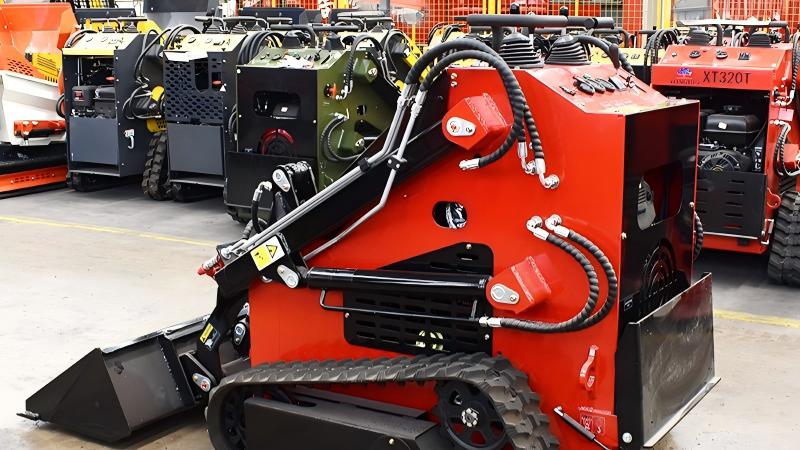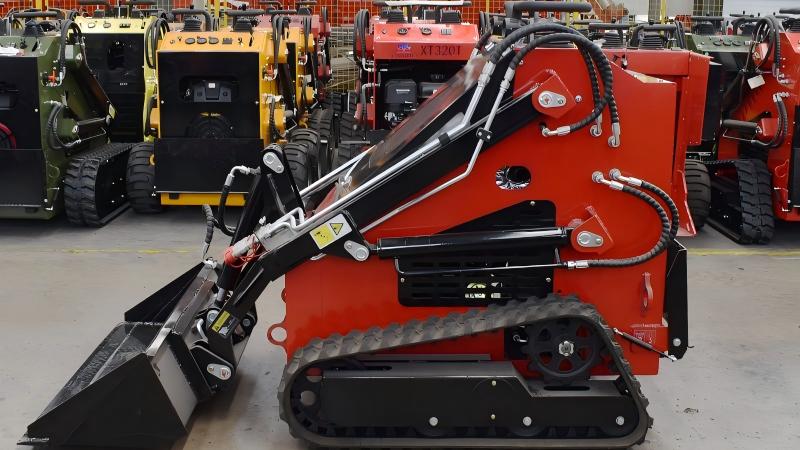High-flow hydraulics on a skid steer loader refers to an optional, enhanced auxiliary hydraulic system designed to deliver a significantly greater volume of hydraulic fluid per minute (measured in gallons per minute or GPM) at a higher pressure (measured in pounds per square inch or PSI) compared to the machine's standard auxiliary hydraulics. Think of it as upgrading from a regular garden hose to a high-pressure fire hose; the core function is the same—to transport fluid—but the capacity and power are on an entirely different level. This robust system is engineered specifically to meet the substantial power demands of advanced, high-performance hydraulic attachments. While a standard flow system might adequately power a auger or a smaller breaker, high-flow is the mandatory power source for attachments that require immense hydraulic energy to operate efficiently. This includes heavy-duty machinery like cold planers for asphalt milling, large-diameter trenchers, forestry mulchers for processing dense vegetation, and powerful brush cutters for clearing large areas. The fundamental purpose of high-flow hydraulics is to unlock the full potential of a skid steer, transforming it from a simple loader into a formidable, multi-talented workhorse capable of tackling the most demanding tasks across industries such as construction, landscaping, agriculture, and forestry. It provides the essential hydraulic horsepower that these specialized tools need to function at their peak performance, ensuring optimal cutting, grinding, digging, or milling speeds that would be unattainable with a standard flow system.
The decision of whether you need high-flow hydraulics is not a matter of simple preference but a critical calculation based entirely on the specific attachments you plan to use and the nature of your work. The primary indicator that you require a high-flow system is your reliance on, or future plans to utilize, high-demand hydraulic attachments. If your operational scope is limited to more common tasks using attachments like standard buckets, pallet forks, grapples, or even a compact auger, a standard flow skid steer will likely be perfectly sufficient and more cost-effective. These tools do not draw enough hydraulic power to justify the additional investment in the high-flow option. However, if your business involves frequent work with attachments such as trenchers, stump grinders, rock wheels, soil stabilizers, or cold planers, then high-flow hydraulics transitions from an optional extra to an absolute necessity. Operating these attachments without adequate hydraulic flow will result in severely underwhelming performance; the attachment will function sluggishly, struggle to maintain power, and fail to complete tasks in a timely or efficient manner. This not only leads to frustrating project delays and increased labor costs but can also cause premature wear and damage to both the underpowered attachment and the skid steer's own hydraulic system due to constant strain and potential overheating from working beyond its designed capacity.
Beyond merely making demanding attachments work, high-flow hydraulics fundamentally elevates your operational efficiency and productivity to a new level. The most significant benefit is a dramatic increase in work speed and output quality. A forestry mulcher powered by high-flow hydraulics will process trees and brush much faster and with a finer mulch, a trencher will dig a clean trench more rapidly, and a cold planer will remove asphalt or concrete in a single pass that might require multiple passes with a standard-flow machine. This translates directly into completing projects faster, allowing you to take on more jobs and increase your overall profitability. Furthermore, by providing the correct, ample power that these heavy-duty attachments are engineered for, you reduce the risk of stalling and minimize unnecessary stress on the attachment's internal components and the skid steer's engine and hydraulic pumps. This proper power matching leads to smoother operation, less downtime for repairs, and an extended lifespan for both your expensive attachments and the skid steer itself. In essence, high-flow hydraulics is an investment in long-term reliability and reduced total cost of ownership. It future-proofs your equipment, giving you the flexibility to rent or purchase a wider array of powerful attachments as your business grows and diversifies, ensuring your skid steer remains a versatile and central asset on your worksite for years to come.
In conclusion, high-flow hydraulics is a specialized, high-performance feature that serves as a critical gateway to a world of powerful, productivity-boosting attachments for your skid steer. It is not a requirement for every user or every application, but for professionals in fields like demanding landscaping, site development, forestry, or heavy construction, it is an indispensable component of their operational toolkit. Before making a purchasing decision, carefully evaluate your current and anticipated future workload. If your projects consistently involve tasks that require extreme hydraulic power—such as land clearing, deep trenching, or surface milling—then specifying a skid steer with a high-flow hydraulic system is a strategic and necessary investment. Conversely, for light-duty construction, farm chores, or general material handling, the standard auxiliary hydraulics will be perfectly capable and more economically sensible. Ultimately, understanding the capability and purpose of high-flow hydraulics empowers you to make an informed choice, ensuring you select the right skid steer configuration that aligns perfectly with your business needs, maximizes your return on investment, and provides the power and performance required to successfully and profitably complete your toughest jobs.
Post time:Nov.13.2025



